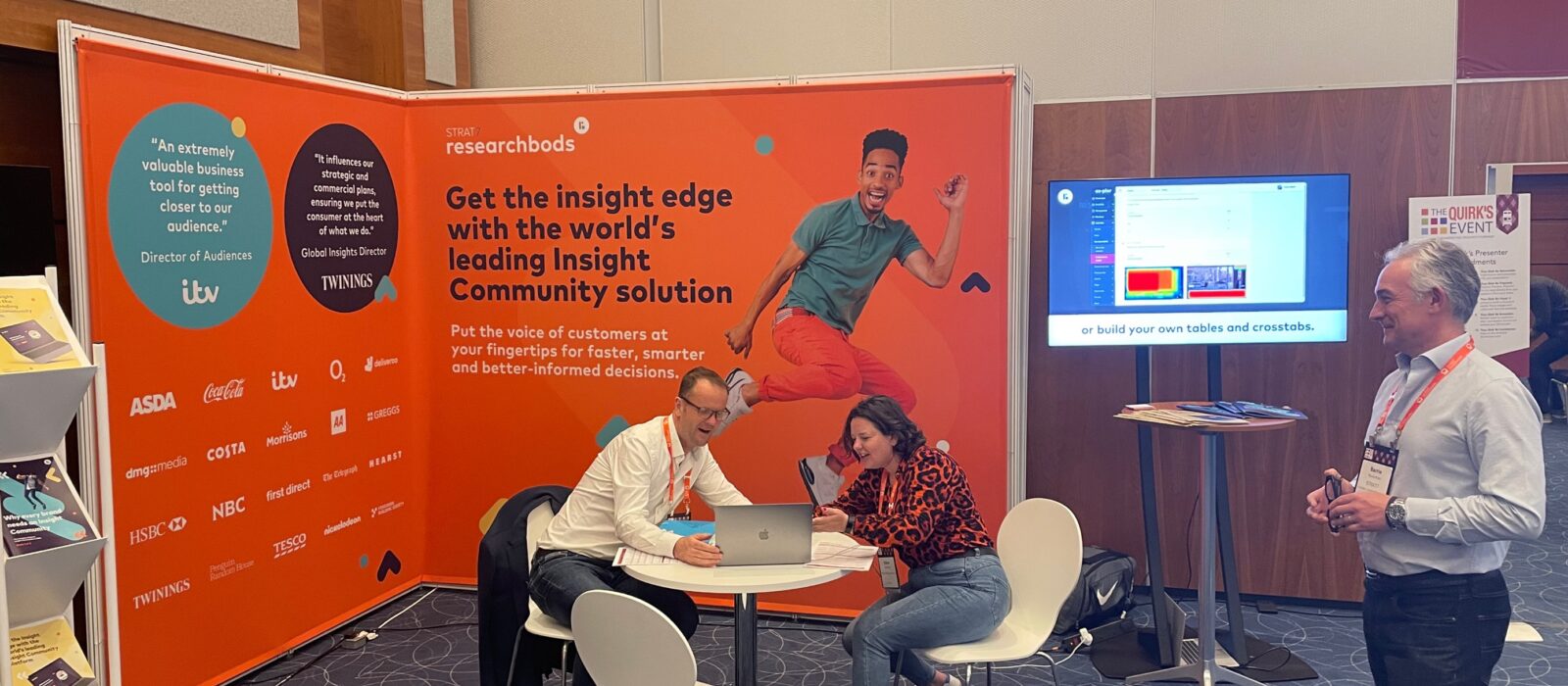Hungry for more?
Thanks for reading our blog! If you want to find out more then be sure to get in touch.
We are always happy to provide advice, guidance or tell you a little bit more on how we can help you brand.
Email: enquiry@researchbods.com

As ever, we had a great time at Quirk’s London 2022, demo-ing our platform, sharing our latest research, and catching up with old and new friends! In this blog, we’ll cover three key takeaways and common themes we noticed at the event…
At Quirk’s, we were super excited to be able to present results from our research project on Gen Z. We’ve spent the last year digging into what makes 16-24 year olds tick, how best to engage and captivate them for market research purposes, and how we can gain better insight into the minds of the demographic with the most global purchasing power.
Well, it seems that great minds think alike, and we managed to catch a few presentations on what others have learned about Gen Z (though we think ours was the best, of course!). We saw some common themes and considerations to bear in mind while trying to engage Gen Z, including:
Ensuring the quality of data is still of the utmost importance to brands and researchers, and understandably so. We noticed a lot of sessions talked about the steps you can take during research to uphold the highest data quality. We’re proud to say all of these tips are a part of our standard data collection and community management procedures. These include but are not limited to:
It’s all well and good undergoing a large-scale research project to get into the minds of your customers. To really understand their values and journey. But how do you make sure that the results are communicated, understood, and acted on business-wide? How can you make sure stakeholders buy into your results, and want to champion them in their respective departments?
There is no one-size-fits-all approach. Some people like long-form infographics, some like quant charts, and some like short videos. It might be possible to identify a departmental theme in this respect, but otherwise be aware that certain results might be more suited to a certain format, and each stakeholder might have a personal preference on how they consume data.
For key strategic projects, it’s worthwhile spending a little more time on a proper comms plan. Brand the project to help make it recognisable and tangible amongst stakeholders. Imbue presentations with a catchy hook, clearly communicate the goals and benefits of the research early on, and let each department know how they might stand to benefit from the results. However, make sure this is measured; if you’re outputting very regular results, pick your battles on which ones to make a larger fuss of, and which ones to casually share in Slack channels, Teams chats, email threads or otherwise.